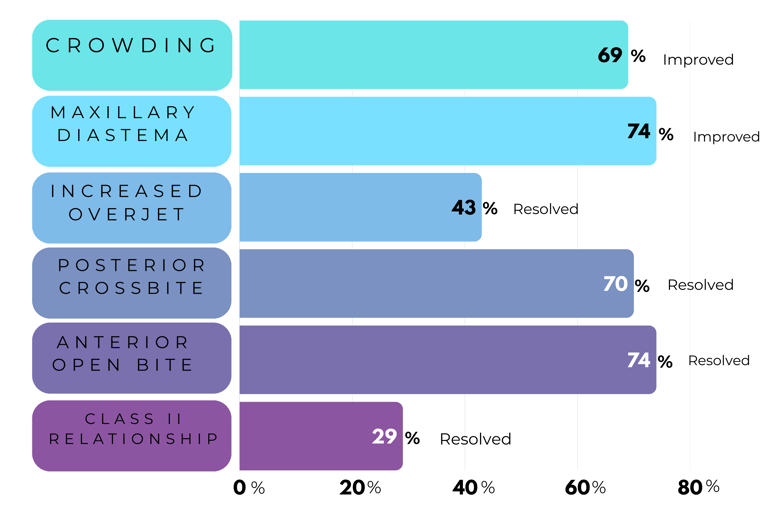Early intervention , shall we or shall we not ?
1 min read
A longitudinal study conducted by Diego et al "A longitudinal study of intermaxillary and intraarch relationships from mixed to permanent dentition: A 4-year follow-up", published in the American Journal of Orthodontics and Dentofacial Orthopedics (AJO-DDO), investigated the natural progression of dental relationships from mixed to permanent dentition over four years.
Initial sample: 785 children aged 8–10
Sample after dropout : 352 children
Key Findings
The study observed significant improvements in various dental parameters without orthodontic intervention:
Crowding: Improved in 69% of children who initially presented with crowding in both arches.
Maxillary Diastema: Decreased in 74% of cases.
Overjet: Normalized in 43% of children with increased overjet at the initial assessment.
Posterior Crossbite: Resolved in 70.5% of cases.
Anterior Open Bite: Corrected in 74% of instances.
Class II Molar Relationship: Transitioned to Class I in 29% of children.
Clinical Implications
These findings suggest that certain malocclusions may self-correct during the transition from mixed to permanent dentition. This underscores the importance of:
Monitoring Growth: Recognizing the potential for natural correction in specific cases.
Treatment Timing: Re-evaluating the necessity and timing of early orthodontic interventions, particularly for conditions with high rates of spontaneous improvement.
Final Thought
While the study offers valuable insight into the natural resolution of developing malocclusions, it would have been helpful to know more about the initial severity of the malocclusions. This information would aid in distinguishing which cases are more likely to self-correct versus those requiring timely intervention.
A chart summarizing Diego et al. Findings :





